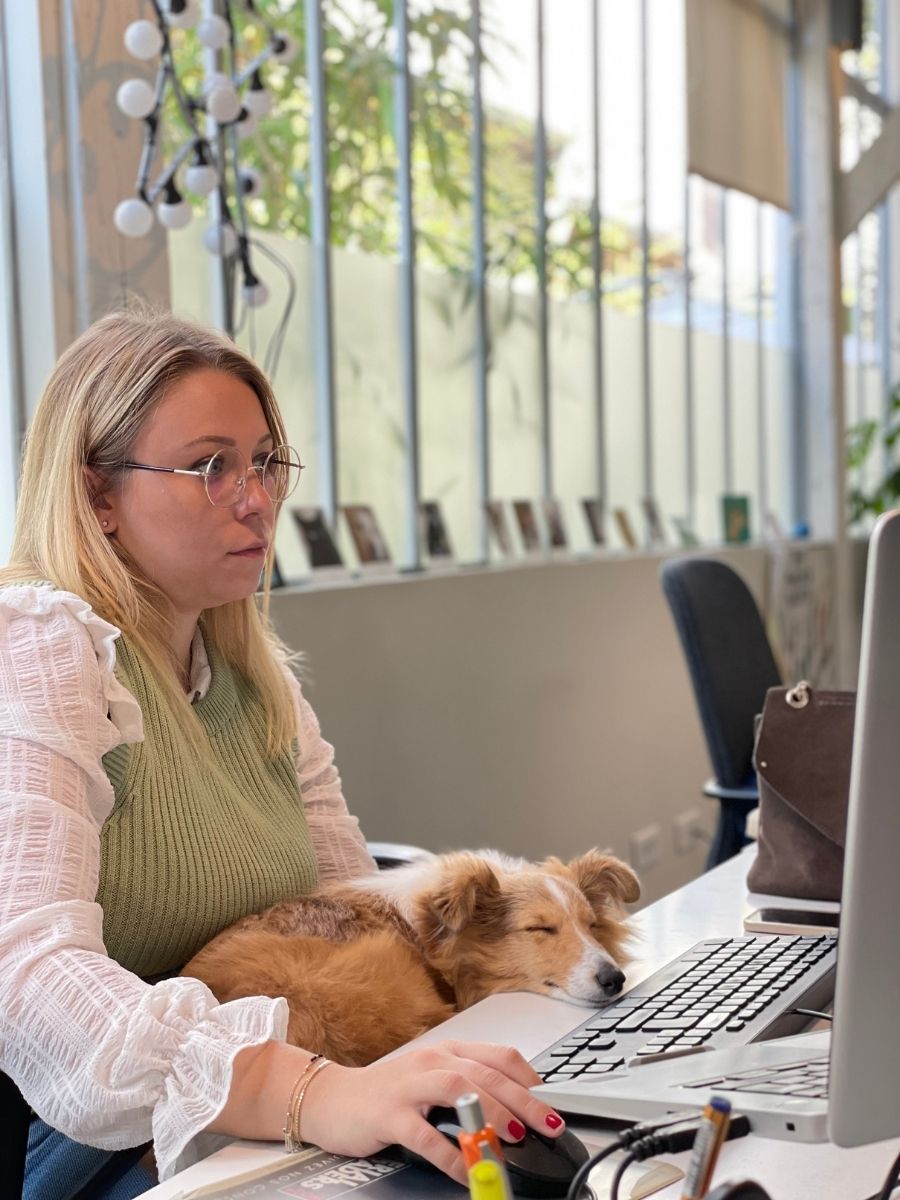Dogs are highly social animals and are well adapted to living in groups. Therefore, they tend to not tolerate solitude. So what happens when you are out working and your dog is left alone at home? Are there any solutions?
Well, as a matter of fact, we have started witnessing something quite interesting and useful in companies. Yes, indeed, a new practice is taking off and consists of bringing your faithful companion with you to work. So don't be surprised to see a little ball of fur walking in the corridors, as this practice is developing more and more in companies, where dogs are playing an important role. Pets at work promote better relationships, make people more creative, and lighten the mood.
So, why not bring your dog to the office? They will be more than happy and we will tell you why.
Teaching your dog to be alone: A problem many dog owners face
There is nothing worse for a dog than to spend the day alone and bored. Many owners adopt their dogs without realising how much time they will spend alone.
Access to a garden or toys are rarely enough: all the toys in the world will be of no interest to your dog if they are alone to play with them. The same goes for the garden; spending time in it is absolutely not the same for a dog as going out for a walk or playing with their owner.

Even if you walk your dog before and after work, too much time alone can lead to behavioural problems. In any case, it is important to differentiate your dog's physical and mental needs and their need for attention. Unfortunately, when these needs are not met, the risk of abnormal behaviour is present: destruction, barking, aggressiveness, mood swings and/or difficulty in managing their emotions... and this is not the dog's fault!
We then see palliative solutions being put in place, some going as far as restricting the dog's freedom when it is alone, in a cage. These solutions, when not combined with behavioural therapy to teach the dog to be alone, merely mask the symptoms, without solving anything. And the dog's well-being suffers, which can lead to total resignation.
“Pets at work", a new and appropriate solution
Ideally, a dog shouldn't be left alone very often. So, if your dog can accompany you to your office without causing any problems, the question of leaving a dog alone for 8 hours a day no longer arises!
For a dog, it is therefore an excellent solution. It doesn't matter if you stay inactive in an office because as long as your dog is close to you, in a more stimulating environment, it will satisfy their social needs.

Naturally, dogs will have to learn a few things in order to be accepted in any company. You wouldn't want your dog to cause disturbances during meetings, for example! But with a few training sessions, teaching your dog to stay in their bed when they need to and stop barking when asked to, will make the pets at work experience fun! And it’s a small price to pay for the possibility of staying with your human, right Fido?
Pets at Work is a great solution to avoid your dog being left alone all day, but it is still important to teach your dog to be left alone for at least a few hours, as sometimes your furry friend won’t have a choice.
What can you say to your employer to convince him or her to bring your dog in the office?
The fact remains that the practice is still quite rare in companies. The dog, an animal perceived as active, restless and noisy, which can distract employees, is often frowned upon by managers.
But this is the first myth to be shattered: the dog will indeed distract the team, but to work better afterwards! This technique is well known by teachers: a little joke during a long lesson is the ideal trick to keep the audience focused, and above all motivated! A working session with short but positive breaks is more effective than a long session without breaks.
You can also mention the positive aspect of the dog's presence on the employees' motivation. Dogs, like children, often bring joy by their mere presence. The role of the mediator dog as a catalyst of our motivation is now known and practiced in many fields.

© Wamiz
The primary argument to be put forward to a manager is therefore the well-being of the team. And you can easily find many studies or testimonies that talk about the change that the animal has brought to their company.
There are other arguments about the consequences of having a dog at work, such as stress reduction, cohesion between colleagues, the development of good habits, etc...
Taking your dog to work can therefore be a solution to be seriously considered, if you have doubts about their well-being when left alone at home, or worse, if you already have behavioural problems. Your dog will really be the first to thank you, as it is more logical, taking into account their needs, to keep them close to you, than to leave them alone nearly all day 5 days a week!

